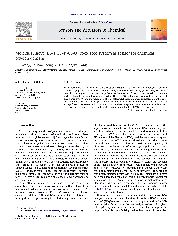摘要
The nanocomposite TiO2/molecular sieve 4A as photocatalyst was fabricated and employed to develop an effective, rapid, simple and environmental friendly method for chemical oxygen demand (COD) detection. This new approach overcomes the problems with direct use of TiO2 for COD detection techniques such as photo-decay and difficulties in recycling. Here, the COD value was calculated from the changed absorbance of Cr(VI) and the mechanism of the photocatalytic oxidation was discussed. Under the optimal condition, the COD sensor gave a detection limit of 0.24 mgl(-1) and a linear range from 3.0 to 15 mgl(-1). With the recoveries from 97 to 103% and without any pretreatments for complicated samples, the developed sensor was successfully applied to the determination of COD in real samples.
- 出版日期2011-12-15
- 单位湖北大学
